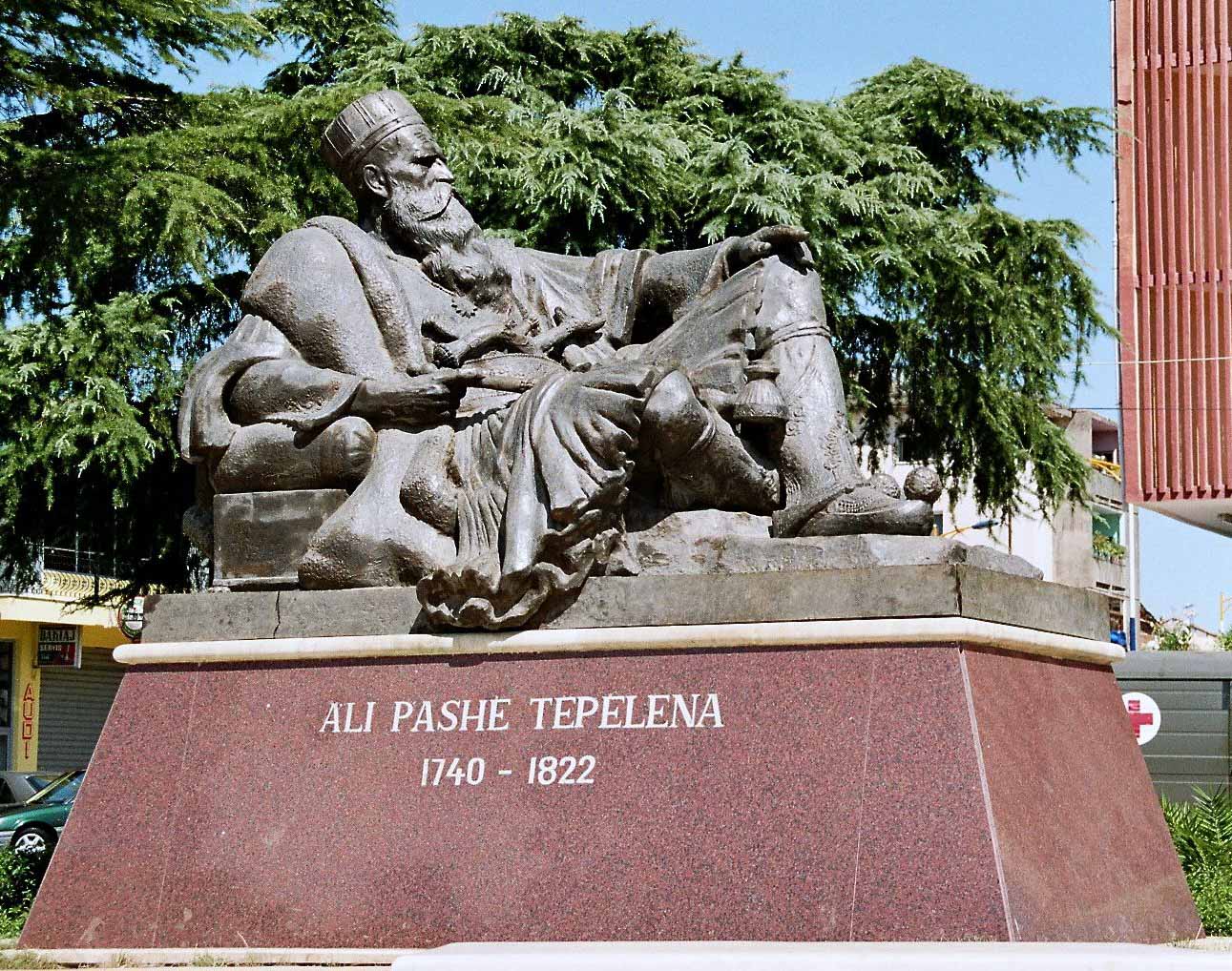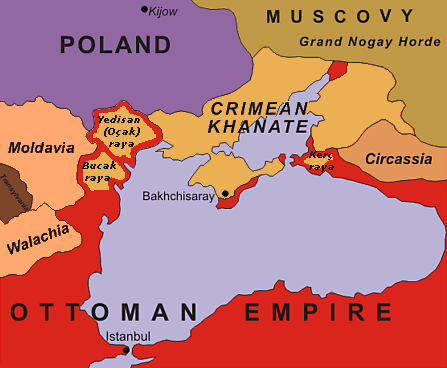|
Vallaades
The Vallahades () or Valaades () are a Greek-speaking Muslim population who lived along the river Haliacmon in southwest Greek Macedonia, in and around Anaselitsa (modern Neapoli) and Grevena. They numbered about 17,000 in the early 20th century. They are a frequently referred-to community of late-Ottoman Empire converts to Islam, because, like the Cretan Muslims, and unlike most other communities of Greek Muslims, the Vallahades retained many aspects of their Greek culture and continued to speak Greek for both private and public purposes. Most other Greek converts to Islam from Macedonia, Thrace, and Epirus generally adopted the Ottoman Turkish language and culture and thereby assimilated into mainstream Ottoman society.See Hasluck, 'Christianity and Islam under the Sultans', Oxford, 1929. Name The name ''Vallahades'' comes from the Ottoman Turkish Islamic expression 'by God'. They were also known as , ''Foútsides''; from , ''foútsi m'', which is a corruption of the Greek , ... [...More Info...] [...Related Items...] OR: [Wikipedia] [Google] [Baidu] |
Cretan Muslims
The Cretan Muslims or Cretan Turks ( or , or ; , , or ; ) were the Muslim inhabitants of the island of Crete. Their descendants settled principally in Turkey, the Dodecanese Islands under Italian administration (part of Greece since 1947), Syria (notably in the village of Al-Hamidiyah), Lebanon, Palestine, Libya, and Egypt, as well as in the larger Turkish diaspora. Cretan Muslims were descendants of ethnic Greeks who had converted to Islam after the Ottoman conquest of Crete in the seventeenth century. They identified as Greek Muslims, and were referred to as " Turks" by some Christian Greeks due to their religion; not their ethnic background. Many Cretan Greeks had converted to Islam in the wake of the Ottoman conquest of Crete. This high rate of local conversions to Islam was similar to that in Bosnia-Herzegovina, Albania, parts of western Greek Macedonia (such as the Greek Muslim Vallaades), and Bulgaria; perhaps even a uniquely high rate of conversions rather than ... [...More Info...] [...Related Items...] OR: [Wikipedia] [Google] [Baidu] |
Vlachs
Vlach ( ), also Wallachian and many other variants, is a term and exonym used from the Middle Ages until the Modern Era to designate speakers of Eastern Romance languages living in Southeast Europe—south of the Danube (the Balkan peninsula) and north of the Danube. Although it has also been used to name present-day Romanians, the term "Vlach" today refers primarily to speakers of the Eastern Romance languages who live south of the Danube, in Albania, Bulgaria, northern Greece, North Macedonia and eastern Serbia. These people include the ethnic groups of the Aromanians, the Megleno-Romanians and, in Serbia, the Timok Romanians. The term also became a synonym in the Balkans for the social category of shepherds, and was also used for non-Romance-speaking peoples, in recent times in the western Balkans derogatively. The term is also used to refer to the ethnographic group of Moravian Vlachs who speak a Slavic language but originate from Romanians, as well as for Morlachs ... [...More Info...] [...Related Items...] OR: [Wikipedia] [Google] [Baidu] |
Vlach
Vlach ( ), also Wallachian and many other variants, is a term and exonym used from the Middle Ages until the Modern Era to designate speakers of Eastern Romance languages living in Southeast Europe—south of the Danube (the Balkan peninsula) and north of the Danube. Although it has also been used to name present-day Romanians, the term "Vlach" today refers primarily to speakers of the Eastern Romance languages who live south of the Danube, in Albania, Bulgaria, northern Greece, North Macedonia and eastern Serbia. These people include the ethnic groups of the Aromanians, the Megleno-Romanians and, in Serbia, the Timok Romanians. The term also became a synonym in the Balkans for the social category of shepherds, and was also used for non-Romance-speaking peoples, in recent times in the western Balkans derogatively. The term is also used to refer to the ethnographic group of Moravian Vlachs who speak a Slavic language but originate from Romanians, as well as for Morlachs and I ... [...More Info...] [...Related Items...] OR: [Wikipedia] [Google] [Baidu] |
Greek Macedonians
Macedonians (, ''Makedónes''), also known as Greek Macedonians or Macedonian Greeks, are a regional and historical population group of ethnic Greeks, inhabiting or originating from the Macedonia (Greece), Greek region of Macedonia, in Geography of Greece, Northern Greece. Most Macedonians live in or around the regional capital city of Thessaloniki and other cities and towns in Macedonia (Greece), while many have spread across Greece and in the Greek diaspora, diaspora. Name The name Macedonia (, ') comes from the ancient Greek word ('). It is commonly explained as having originally meant "a tall one" or "highlander", possibly descriptive of the Ancient Macedonians, people. The shorter English name variant ''Macedon'' developed in Middle English, based on a borrowing from the French form of the name, ''Macédoine''. History Preface: Ancient Macedonian, Roman, Byzantine, Ottoman periods Greeks, Greek populations have inhabited the region of Macedonia (region), Macedonia s ... [...More Info...] [...Related Items...] OR: [Wikipedia] [Google] [Baidu] |
Vardar
The Vardar (; , , ) or Axios (, ) is the longest river in North Macedonia and a major river in Greece, where it reaches the Aegean Sea at Thessaloniki. It is long, out of which are in Greece, and drains an area of around . The maximum depth of the river is . Etymology The name ''Vardar'' for the river may have been derived from Thracian, although Dardanian, Paeonian, Ancient Macedonian and Ancient Greek were also spoken in the lands drained by the river. The modern Vardar is thought to derive from an earlier *''Vardários'', which may ultimately derive from Proto-Indo-European (PIE) *''(s)wordo-wori-'' "black water". The name ''Vardários'' (Βαρδάριος) was sometimes used by the Ancient Greeks in the 3rd century BC. The same name was widely used in the Byzantine era. Vardar/Vardarios may be a translation of (or otherwise have a similar meaning as) ''Axios'', which may be Thracian and may have meant "not-shining" from PIE *''n.-sk(e)i'' (cf. Avestan ''axšaēna'' ... [...More Info...] [...Related Items...] OR: [Wikipedia] [Google] [Baidu] |
François Pouqueville
François Charles Hugues Laurent Pouqueville (; 4 November 1770 – 20 December 1838) was a French diplomat, writer, explorer, physician and historian, and member of the Institut de France. He traveled extensively throughout Ottoman-occupied Greece from 1798 to 1820; first as the Turkish sultan's hostage, then as Napoleon Bonaparte's general consul at the court of Ali Pasha of Ioannina. With his far reaching diplomacy and writings, he became a prominent architect of the Philhellenism movement throughout Europe and contributed eminently to the liberation of the Greeks and the rebirth of the Greek nation. Youth: minister and revolutionary His uncommon talent as a writer revealed itself early in a lifelong correspondence with his younger brother, Hugues, and their sister, Adèle. His detailed letters to his siblings are still an exceptional source of knowledge on the life of a world traveler, explorer, and diplomat during the French Revolution, the Napoleonic Empire, and the ... [...More Info...] [...Related Items...] OR: [Wikipedia] [Google] [Baidu] |
Thessaly
Thessaly ( ; ; ancient Aeolic Greek#Thessalian, Thessalian: , ) is a traditional geographic regions of Greece, geographic and modern administrative regions of Greece, administrative region of Greece, comprising most of the ancient Thessaly, ancient region of the same name. Before the Greek Dark Ages, Thessaly was known as Aeolia (, ), and appears thus in Homer's ''Odyssey''. Thessaly Convention of Constantinople (1881), became part of the modern Greek state in 1881, after four and a half centuries of Ottoman Greece, Ottoman rule. Since 1987 it has formed one of the country's 13 Modern regions of Greece, regions and is further (since the Kallikratis reform of 2011) sub-divided into five regional units of Greece, regional units and 25 municipalities of Greece, municipalities. The capital of the region is Larissa. Thessaly lies in northern central Greece and borders the regions of Macedonia (Greece), Macedonia to the north, Epirus (region), Epirus to the west, Central Greece (geo ... [...More Info...] [...Related Items...] OR: [Wikipedia] [Google] [Baidu] |
Ali Pasha Of Ioannina
Ali Pasha (1740 – 24 January 1822), commonly known as Ali Pasha of Yanina or Ali Pasha of Tepelena, was an Albanian ruler who served as Ottoman pasha of the Pashalik of Yanina, a large part of western Rumelia. Under his rule, it acquired a high degree of autonomy and even managed to stay '' de facto'' independent. The capital of the Pashalik was Ioannina, which, along with Tepelena, was Ali's headquarters. Conceiving his territory in increasingly independent terms, Ali Pasha's correspondence and foreign Western correspondence frequently refer to the territories under Ali's control as "Albania." This, by Ali's definition, included central and southern Albania, and parts of mainland Greece; in particular, most of the district of Epirus and the western parts of Thessaly and Macedonia. He managed to stretch his control over the sanjaks of Yanina, Delvina, Vlora and Berat, Elbasan, Ohrid and Monastir, Görice, and Tirhala. Ali was granted the Sanjak of Tirhala in 17 ... [...More Info...] [...Related Items...] OR: [Wikipedia] [Google] [Baidu] |
Peloponnese
The Peloponnese ( ), Peloponnesus ( ; , ) or Morea (; ) is a peninsula and geographic region in Southern Greece, and the southernmost region of the Balkans. It is connected to the central part of the country by the Isthmus of Corinth land bridge which separates the Gulf of Corinth from the Saronic Gulf. From the late Middle Ages until the 19th century, the peninsula was known as the Morea, a name still in colloquial use in its demotic form. The peninsula is divided among three administrative regions: most belongs to the Peloponnese region, with smaller parts belonging to the West Greece and Attica regions. Geography The Peloponnese is a peninsula located at the southern tip of the mainland, in area, and constitutes the southernmost part of mainland Greece. It is connected to the mainland by the Isthmus of Corinth, where the Corinth Canal was constructed in 1893. However, it is also connected to the mainland by several bridges across the canal, including two submers ... [...More Info...] [...Related Items...] OR: [Wikipedia] [Google] [Baidu] |
Russo-Turkish War
The Russo-Turkish wars ( ), or the Russo-Ottoman wars (), began in 1568 and continued intermittently until 1918. They consisted of twelve conflicts in total, making them one of the longest series of wars in the history of Europe. All but four of these wars ended in losses for the Ottoman Empire, which was undergoing a period of stagnation and decline. Conversely, they showcased the ascendancy of the Russian Empire as a significant European power after Peter the Great oversaw extensive modernization efforts in the early 18th century. Ultimately, however, the end of the Russo-Turkish wars came about with the dissolution of the two belligerents' respective states as a consequence of World War I: the Russian Empire collapsed in 1917 and was ultimately succeeded by the Union of Soviet Socialist Republics in 1922; while the Ottoman Empire was partitioned between 1918 and 1922 and succeeded by the Republic of Turkey in 1923. History Initial and intermediate phases (1568–1739) ... [...More Info...] [...Related Items...] OR: [Wikipedia] [Google] [Baidu] |








